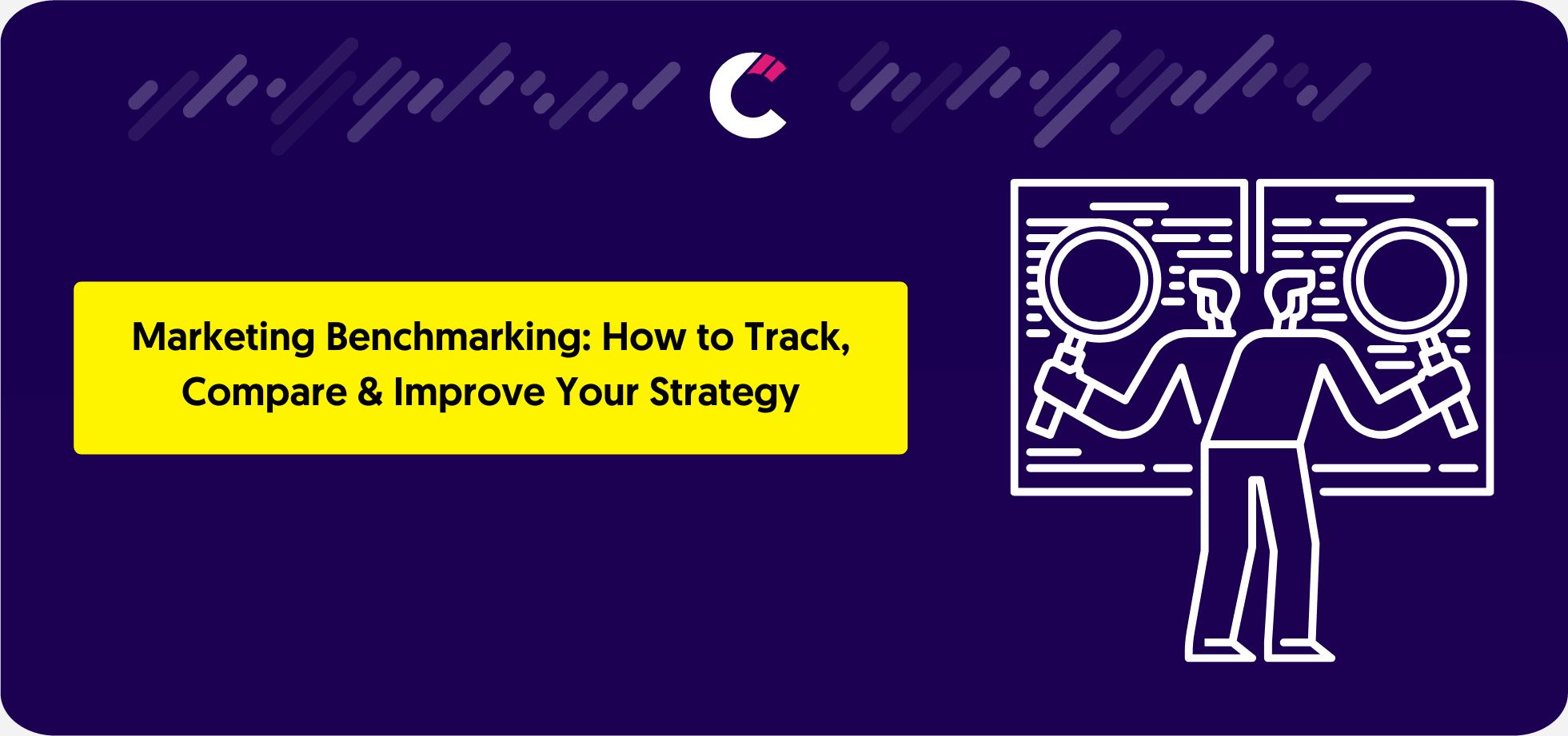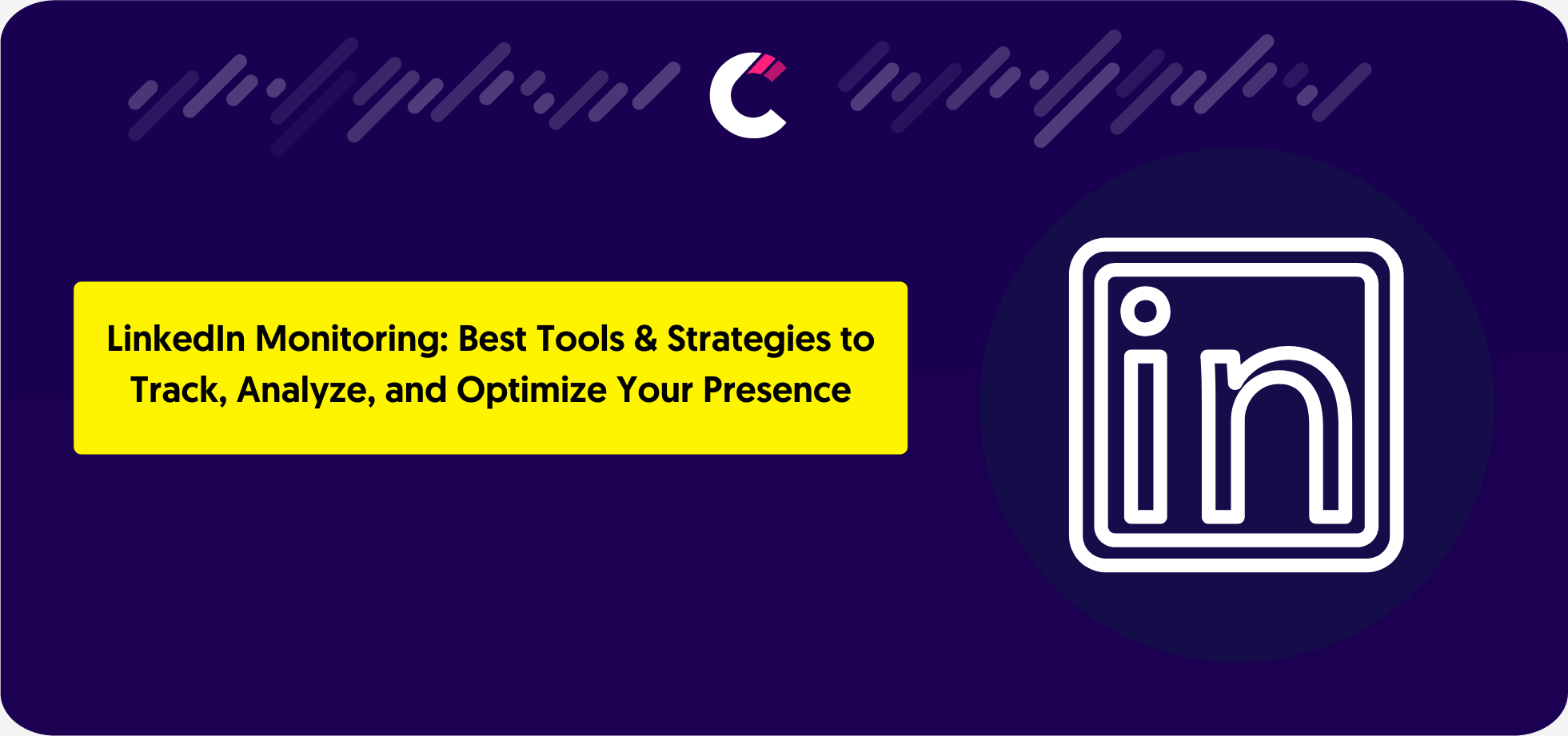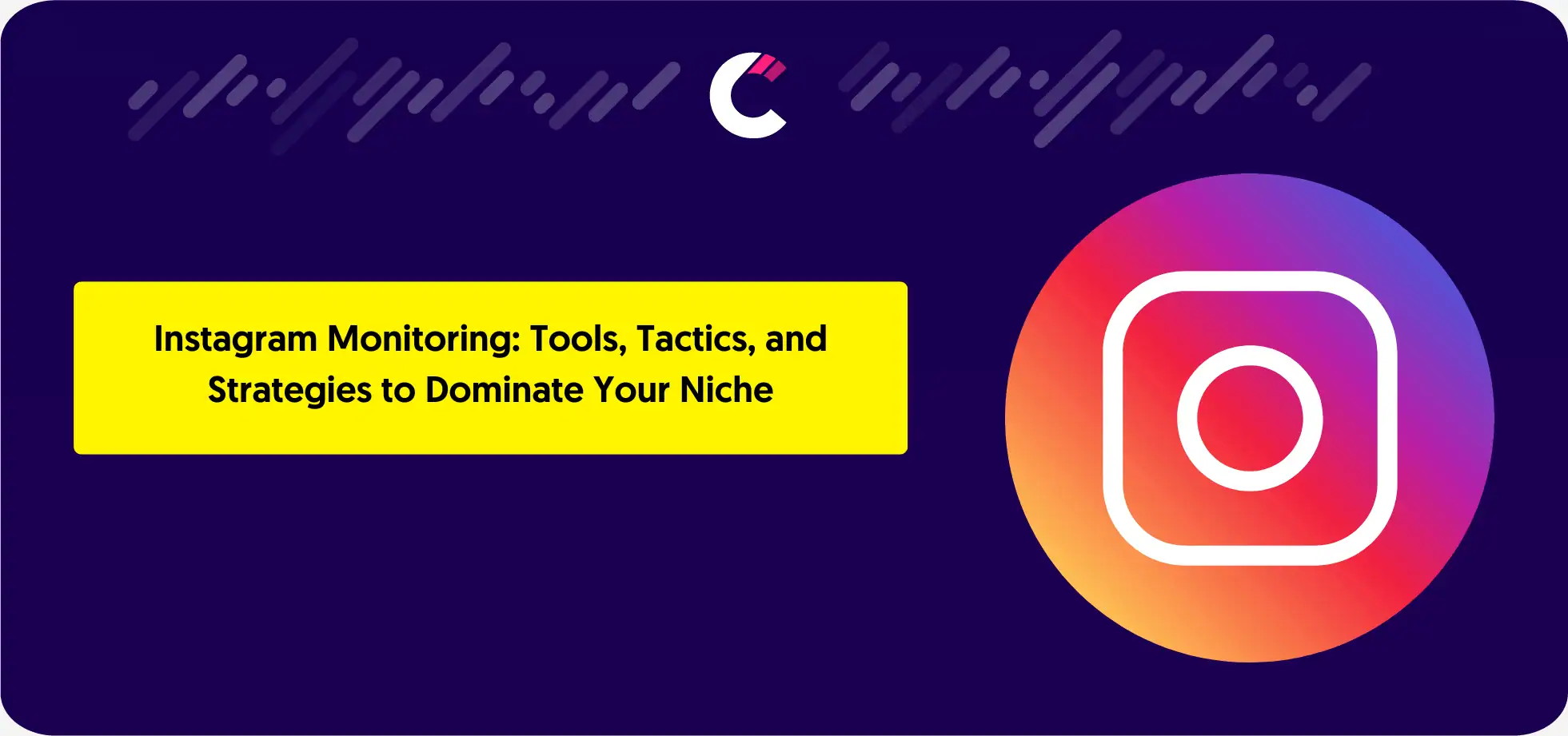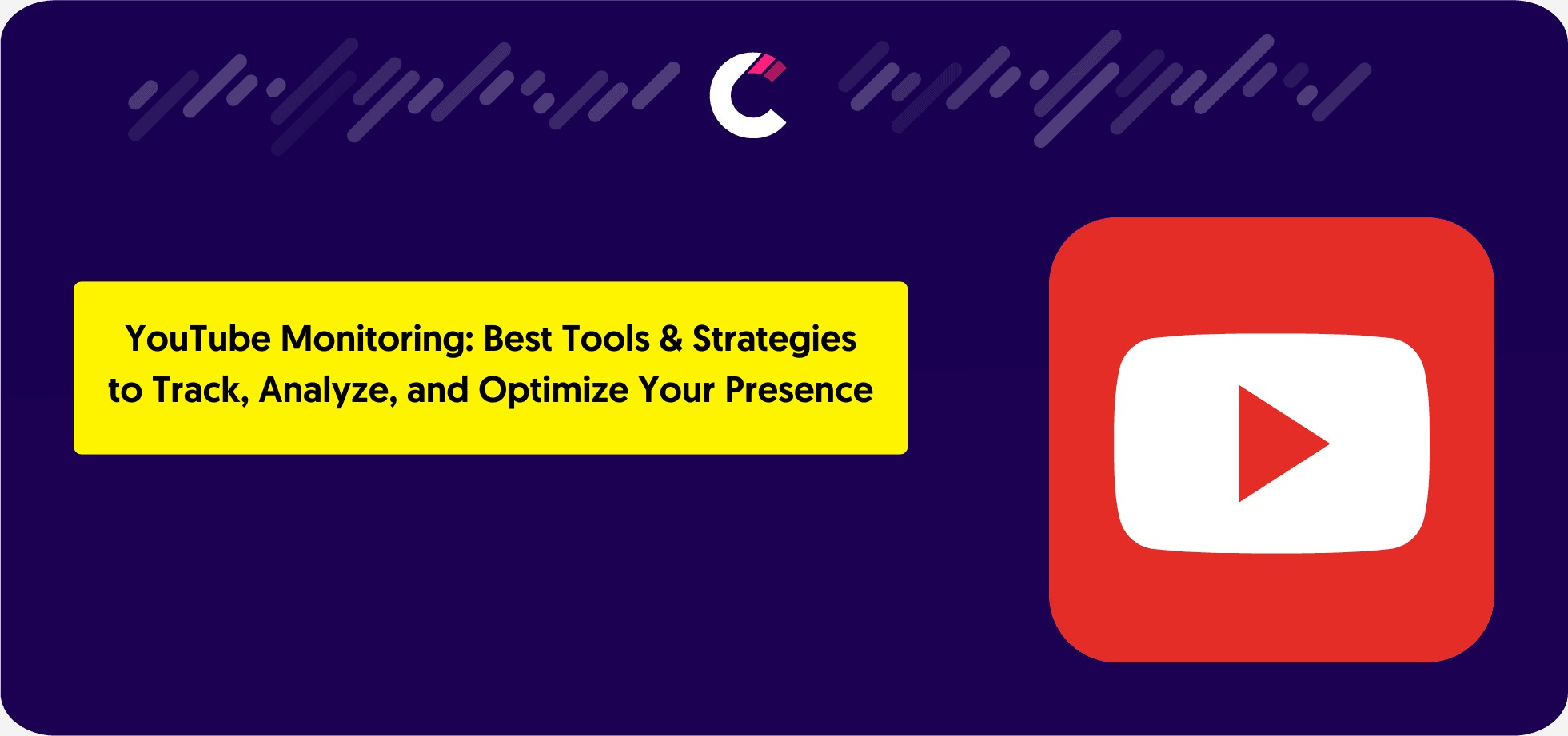What is Marketing Benchmarking?
Okay, so let’s clear this up: marketing benchmarking isn’t just a fancy term for “spying on competitors.” (Though, let’s be real, that’s part of it.) It’s about measuring your marketing performance against industry standards, competitor data, or even your own past results to figure out what’s actually working. Think of it like checking your GPS mid-road trip—you need to know if you’re ahead of schedule, falling behind, or completely lost.
Now, here’s where people get it twisted. Benchmarking ≠ competitive analysis. Competitive analysis is all about what your rivals are doing—who they’re targeting, what ads they’re running, where they’re winning. Benchmarking, on the other hand, is about using that info (plus broader industry data) to set realistic goals and improve your own strategy. It’s less “let’s copy what they’re doing” and more “let’s use this info to make smarter moves.”
And here’s the fun part: benchmarking isn’t just some optional thing that big brands do. Whether you’re running a startup or managing a marketing team, it’s the difference between making data-driven decisions and just crossing your fingers, hoping your next campaign won’t flop.
Anyway, now that we know what marketing benchmarking actually is, let’s talk about why it matters. (Spoiler: it’s more than just flexing on your competitors.)
Why is Benchmarking in Marketing Important?
Let’s get real—if you’re not benchmarking, you’re basically running your marketing blindfolded. And not in a cool, trust-fall kind of way. More like a stumbling-into-traffic situation. You might think your ad campaigns are crushing it, but without industry benchmarks, how do you actually know?
Here’s why benchmarking needs to be part of your marketing playbook:
-
It helps you set goals that aren’t delusional.
Ever seen a brand set a goal like “double website traffic in a month” with zero clue if that’s even possible? Benchmarking stops you from pulling numbers out of thin air. You can set goals based on what’s actually realistic for your industry and business size instead of wishful thinking. -
You stop wasting money on stuff that doesn’t work.
Marketing budgets don’t grow on trees (sadly). Benchmarking shows you which channels are actually worth the spend. If your CPC (cost per click) is twice the industry average, for example, maybe it’s time to rethink your paid ad strategy before your CFO starts side-eyeing you. -
It gives you a legit competitive edge.
Knowing where your competitors stand isn’t about copying them—it’s about exceeding them. If their average email open rate is 25% and yours is 18%, you’ve got a clear target to beat. Without benchmarks, you’re just assuming things are fine when they might not be. -
It turns your marketing strategy into a data-driven machine.
The best marketers aren’t guessing—they’re testing, tweaking, and iterating based on numbers. Benchmarking helps you make decisions with confidence, rather than just going with your gut (which, let’s be honest, isn’t always right).
Anyway, the point is: benchmarking isn’t optional—it’s a cheat code for smarter marketing. Now, let’s talk about the different types of benchmarking and when to use each one.
How Competitors.App Helps with Marketing Benchmarking
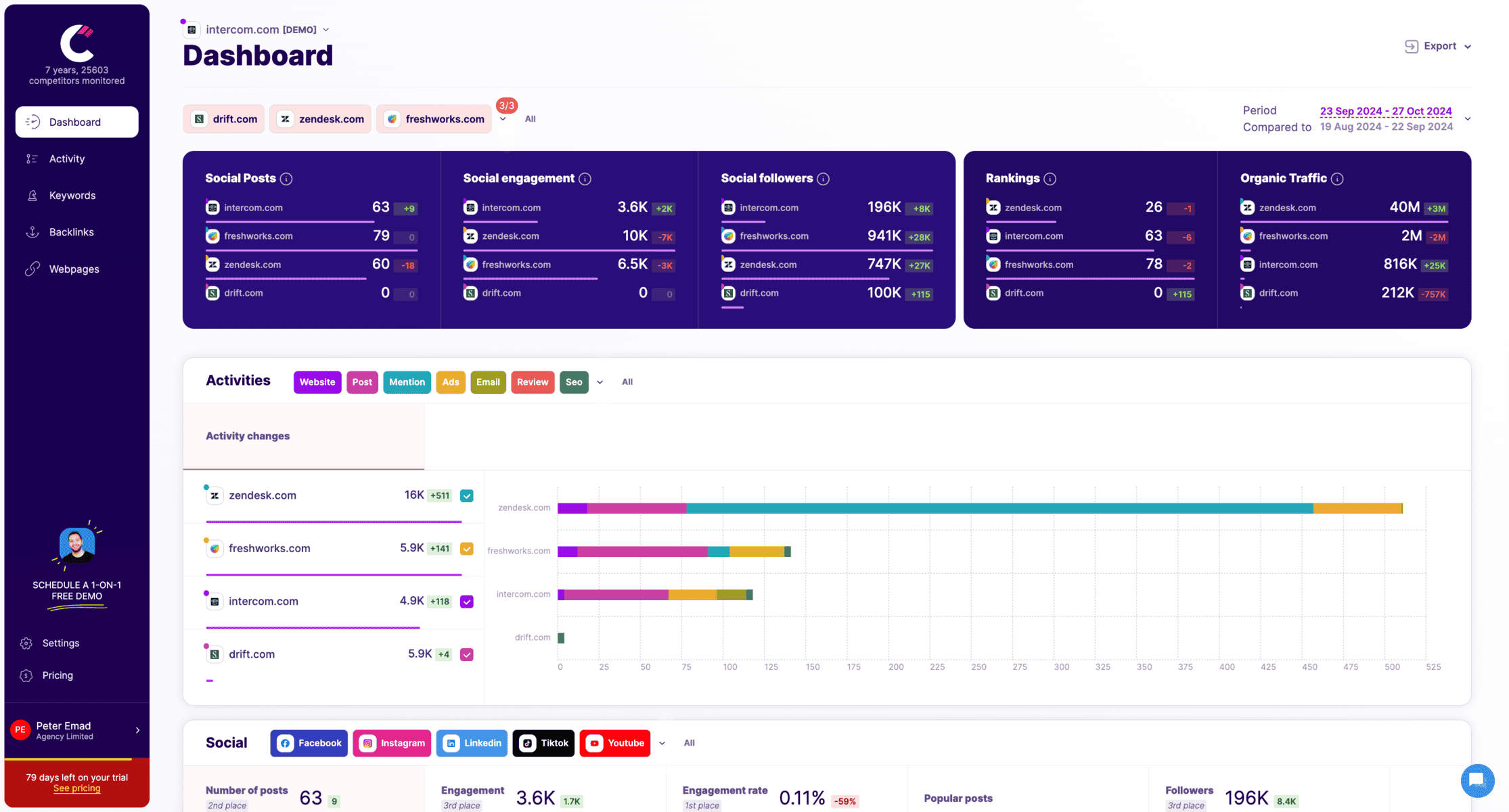
Let’s be real—manually tracking competitors is a nightmare. By the time you collect data, they’ve already switched strategies. That’s where Competitors.app saves the day, automating benchmarking so you can focus on winning.
Automating Competitive Analysis
Instead of juggling tools, Competitors.app tracks everything in one place:
✅ Website changes (new pages, pricing updates)
✅ Ad campaigns (who’s running what, where, and how much)
✅ SEO shifts (new rankings, backlinks, lost keywords)
✅ Social media trends (content, engagement, strategy changes)
Why it matters: No more guessing—you get real-time updates on what’s working for competitors.
Tracking Real-Time Changes
Marketing moves fast. Competitors.app alerts you when rivals:
📢 Launch new ads or tweak messaging
📈 Gain backlinks (so you can target the same ones)
📊 Adjust budgets (catch market shifts before they affect you)
One Dashboard, All Your Insights
No more tab overload—get everything in one place:
- SEO & traffic trends (who’s winning in search?)
- Ad performance & spending patterns (so you don’t overspend)
- Content & social strategy shifts (stay ahead of trends)
Make Smarter, Data-Driven Decisions
Forget gut-based marketing—Competitors.app helps you:
📌 Find strategy gaps (where are you falling behind?)
📈 Optimize spending (where should your budget go?)
🚀 Spot trends early (so you move before competitors do)
Long story short: it’s like having an AI-powered marketing spy—minus the shady ethics.
Pricing: Starts at $19/month.
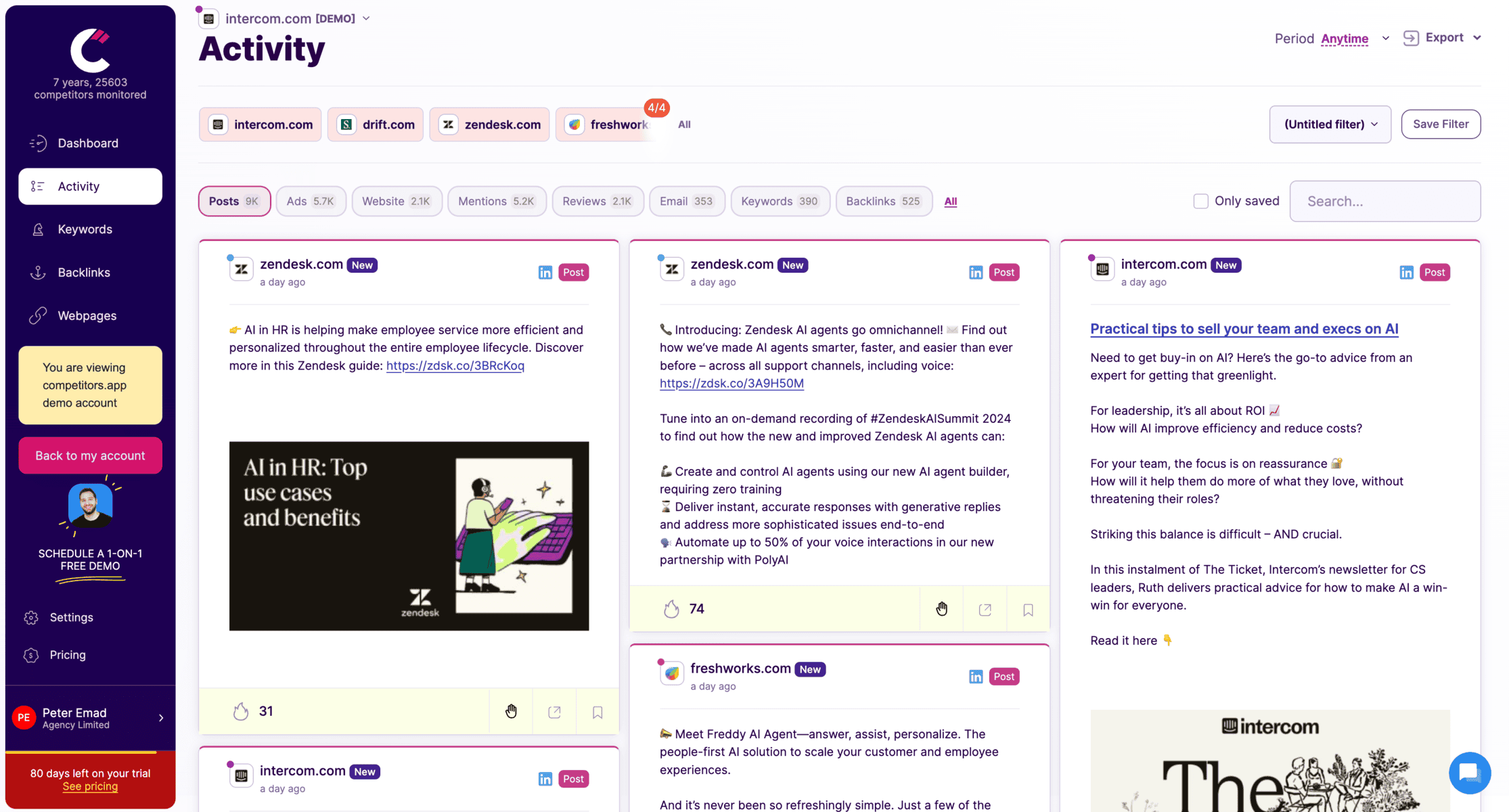
Tracks competitor social media updates across LinkedIn, Facebook, Twitter, and more.
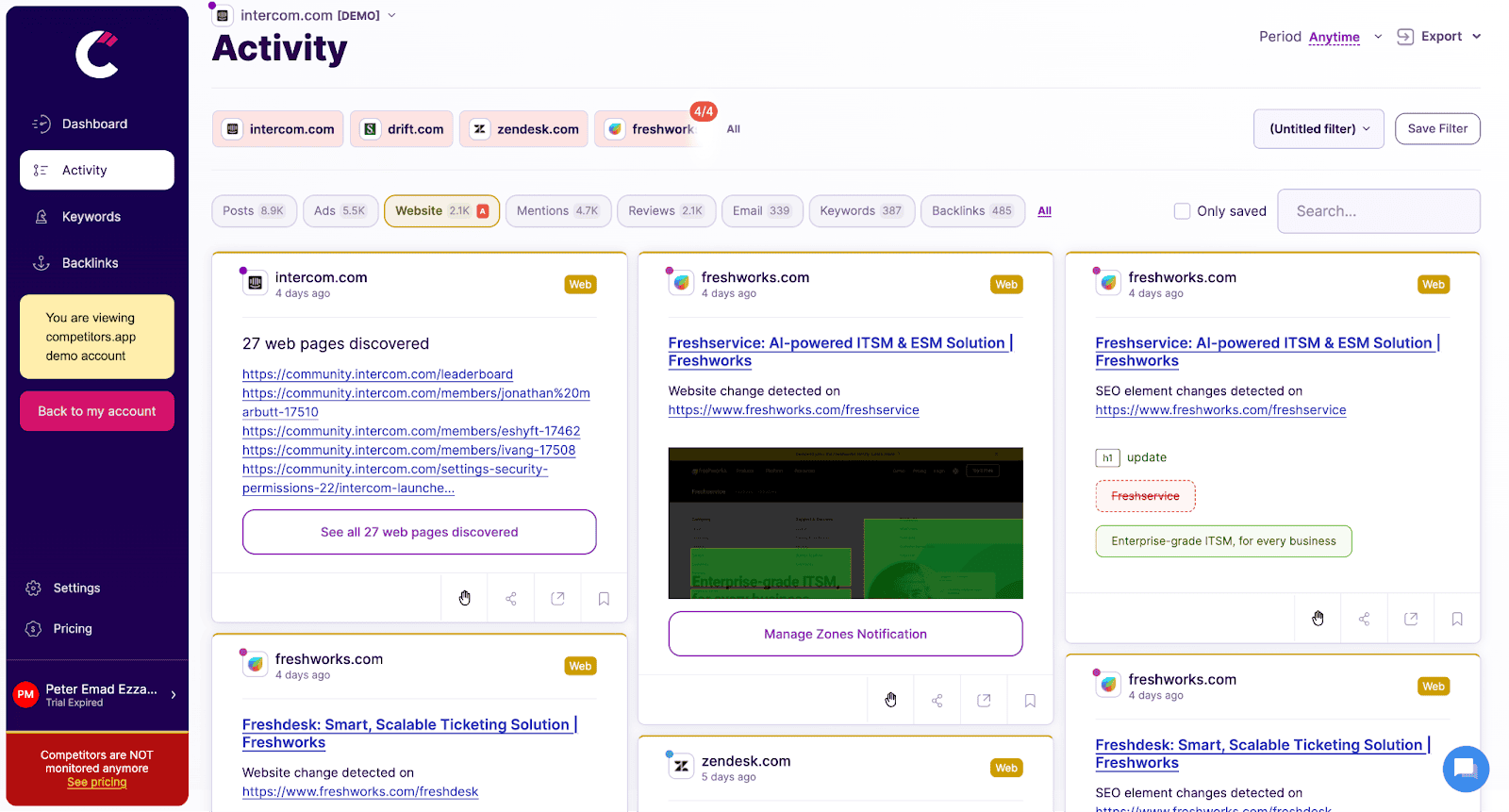
Monitors changes on competitors’ websites, such as product updates, pricing adjustments, and new messaging, providing instant alerts to help sales teams respond promptly.
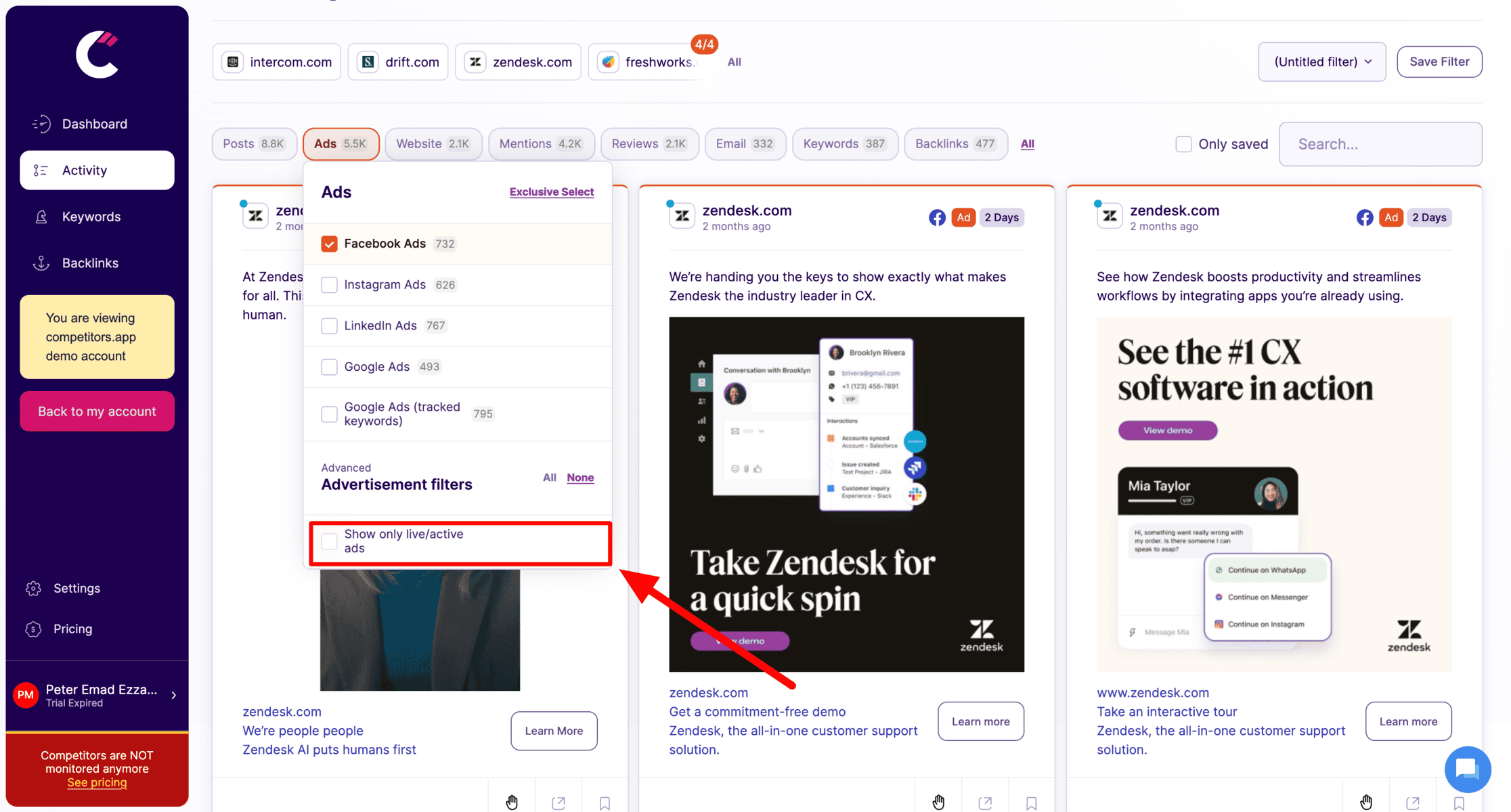
Tracks digital ad campaigns across platforms like Google Ads, Facebook, LinkedIn, and Instagram. It provides details on ad creatives, spending, and performance metrics, helping teams analyze successful ad strategies.

Analyzes competitors’ keyword strategies, organic rankings, and backlinks, allowing teams to refine their own SEO tactics and boost search visibility.
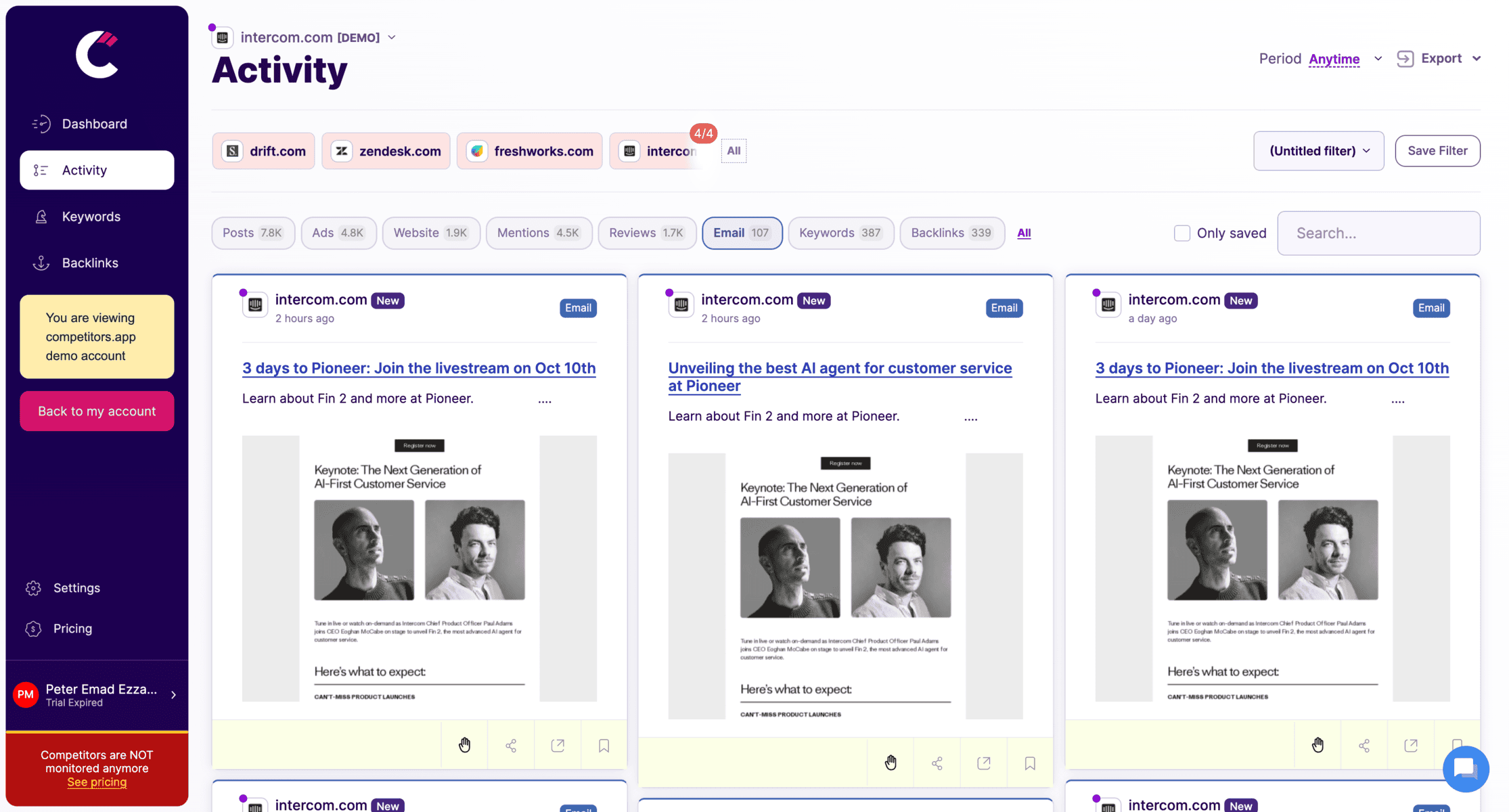
Tracks competitors’ email campaigns, including content, frequency, and engagement metrics, helping sales teams understand email tactics that drive engagement and conversions.
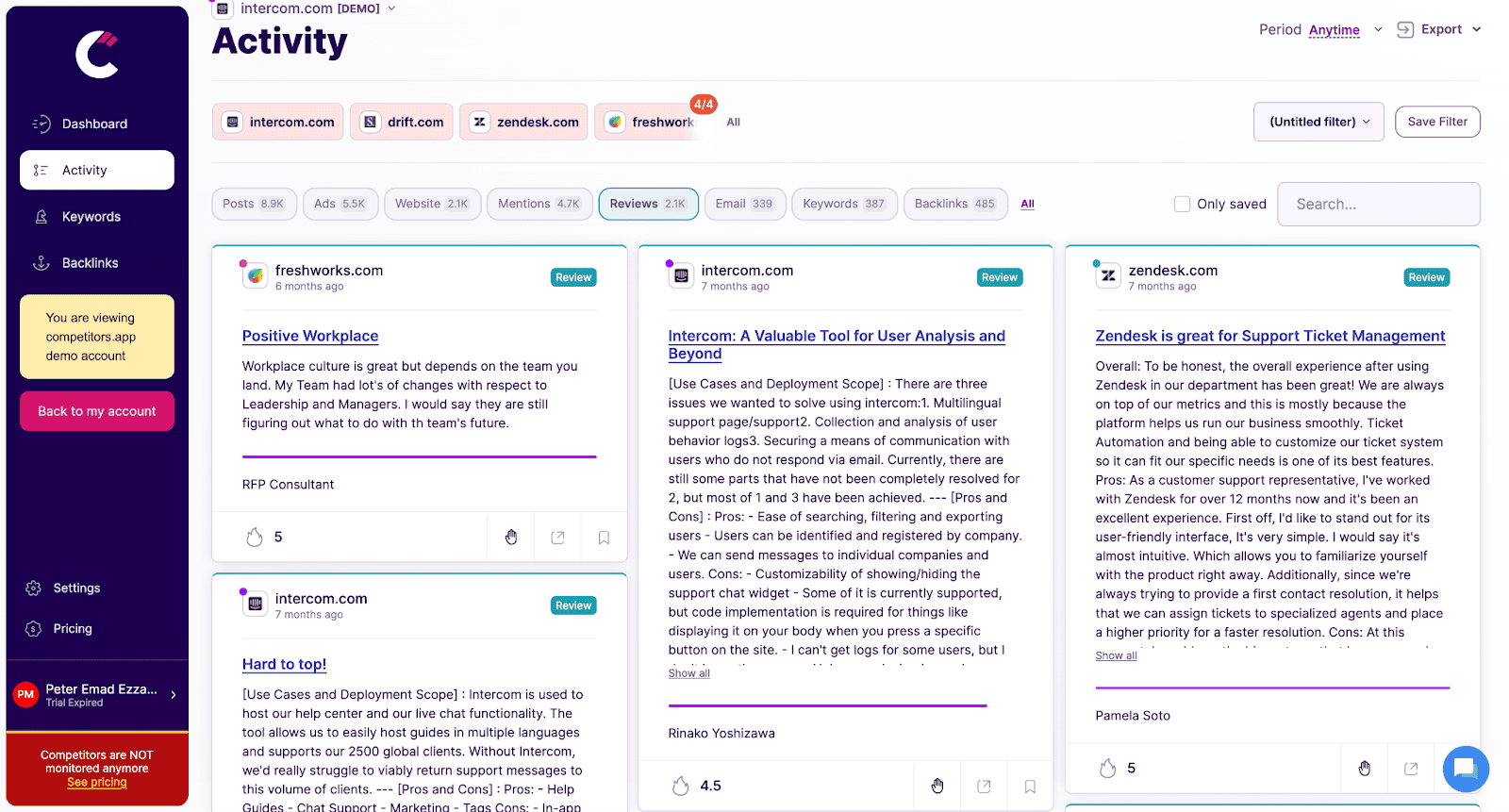
Analyzes customer reviews and ratings for competitors, providing insights into customer feedback, pain points, and product strengths, helping teams craft better sales pitches.
The Different Types of Benchmarking in Marketing
Alright, so we know benchmarking is a marketing must-do, but here’s the thing—it’s not just one thing. There are actually four different types, and knowing which one to use (and when) can make all the difference. Think of it like picking the right tool for the job—sure, you could use a butter knife as a screwdriver, but should you?
Process Benchmarking – Fixing What’s Broken
This one is all about improving specific marketing processes—like email automation, ad targeting, or content distribution. If your email open rates are trash or your PPC campaigns are bleeding money, process benchmarking helps you analyze best practices from top performers and apply them to your own strategy.
Example? Say your webinar sign-ups are painfully low. You compare your landing page structure, CTAs, and ad strategy against high-converting brands. Turns out, your CTA sucks (sorry) and your competitors are using a short-form lead capture instead. Boom—process benchmarking just saved your conversion rate.
Strategic Benchmarking – Learning from the Big Players
This is the big-picture stuff—evaluating high-level business strategies and seeing how market leaders are killing it. It’s less about specific tactics and more about adopting smarter strategies.
For instance, if you’re a SaaS brand, you might study how HubSpot or Salesforce handle content marketing, customer retention, or product-led growth. You’re not copying their exact ads—you’re analyzing their strategy to find inspiration for your own.
Performance Benchmarking – Checking Your Scoreboard
Think of this like checking your stats in a video game. How do your key performance indicators (KPIs) stack up? Website traffic, conversion rates, cost per lead, customer acquisition cost—you compare your numbers to competitors and industry averages to see where you need to step up.
Real-world scenario: If your social media engagement rate is 0.5% but the industry average is 2%, you know your content is either boring, irrelevant, or invisible. Performance benchmarking tells you where to focus your improvements.
Industry Benchmarking – Keeping Up with the Market
This one’s about looking at broader trends in your industry. It’s less about competing with direct rivals and more about understanding market shifts so you don’t fall behind.
For example, if average ad costs are skyrocketing, it’s not just your problem—it’s an industry-wide issue. Maybe brands are shifting budget from paid ads to organic content. Knowing this lets you adjust your strategy before your ROI tanks.
How to Conduct Marketing Benchmarking in 7 Steps

Alright, now that we know what benchmarking is and the different types, let’s talk about actually doing it. Because let’s be honest—knowing is great, but unless you put it into action, it’s just another thing collecting dust in your marketing playbook.
Here’s a 7-step process to benchmark like a pro (or at least avoid making rookie mistakes).
1. Analyze the Right Competitors – Don’t Compare Apples to Oranges
Not all competitors are worth benchmarking against. If you’re a niche B2B SaaS startup, comparing yourself to Amazon is useless. Instead, focus on brands that are:
✅ In your industry
✅ Similar in size and audience
✅ Targeting the same markets
Use Competitors.app, SimilarWeb, or Semrush to dig into their traffic sources, ad spend, and engagement rates. The goal? Find realistic benchmarks so you’re not setting impossible goals based on billion-dollar companies.
2. Determine Where to Improve – Find the Leaks
Before running off to gather data, figure out what you actually need to improve. Is your paid ad conversion rate terrible? Are your email open rates lower than a spam folder? Identify your weak points first—otherwise, you’ll drown in data without clear action items.
A quick way to do this:
- Check past performance trends (are things improving or declining?)
- Compare internal metrics across campaigns (which ones are struggling?)
- Look at customer feedback (what are they complaining about?)
3. Pick the Right Metrics – Because “More Traffic” Isn’t a Strategy
Benchmarking is useless if you’re tracking the wrong stuff. Instead of obsessing over vanity metrics (like social media likes), focus on performance-based KPIs, like:
📈 Traffic & engagement (CTR, bounce rate, time on site)
💰 Conversion rates (lead gen, email sign-ups, purchases)
📊 Ad performance (CPC, ROAS, click-through rates)
🔎 SEO benchmarks (keyword rankings, domain authority)
The key? Match the metric to your goal—if your goal is more leads, track CPL (cost per lead), not just web traffic.
4. Calculate Current Metrics – Know Your Baseline
Now it’s time to collect your own data so you have a starting point. Think of this like stepping on the scale before starting a fitness plan.
Pull historical performance data from:
- Google Analytics (website traffic, conversions, bounce rates)
- Facebook/Google Ads Manager (CPC, CTR, ROAS)
- CRM & Email Platforms (open rates, click-through rates, lead gen)
Without an accurate baseline, you won’t know if you’re improving or just guessing.
5. Create a Benchmarking Strategy – Set Data-Driven Targets
Alright, now you’ve got data. But what’s next? It’s time to set your benchmarks—meaning, realistic targets based on what’s possible in your industry.
Example:
- If your industry’s average email open rate is 25% and yours is 18%, a realistic goal would be to hit 22-23% in 3 months.
- If top competitors are ranking for 500+ keywords and you have 120, your benchmark is to close the gap strategically.
The point? Benchmarks aren’t random numbers—they’re based on real market data.
6. Implement the New Strategy – Make the Changes
This is where you actually apply what you learned. Based on your benchmarks, optimize your marketing efforts:
🔹 Adjust ad spend if your CPC is too high compared to competitors
🔹 Revamp landing pages if your bounce rate is higher than industry norms
🔹 Tweak content strategy to match top-performing competitors
Basically, use benchmarking as a roadmap to make measurable improvements.
7. Continue to Make Adjustments – Benchmarking is Ongoing
One mistake? Treating benchmarking as a one-time event. Markets change, algorithms shift, and what worked last quarter might flop this one.
Set a schedule to review your benchmarks:
🗓 Monthly – Track quick performance trends
📊 Quarterly – Compare against competitors
📈 Annually – Reassess strategy based on new industry trends
If you’re not iterating, you’re falling behind. Benchmarking isn’t about hitting a single goal—it’s about constant optimization.
How Marketing Benchmarking Enhances Performance and Decision-Making
Alright, so you’ve crunched the numbers, compared yourself to competitors, and set some solid benchmarks. Cool. But here’s the real question: how does this actually make your marketing better? Because let’s be honest, if all this data doesn’t lead to smarter decisions, it’s just another analytics dashboard collecting dust.
Using Marketing Benchmarks to Rationalize Strategy and Planning
Ever been in a meeting where someone says, “Let’s 10x our traffic in six months!” and you just sit there like… uh, based on what? 😐
That’s where benchmarking saves the day. Instead of throwing out unrealistic goals, you back your strategy with data:
📊 Competitor data says the industry average traffic growth is 15% per year → So a 10x goal is insane unless you’re sitting on a viral miracle.
📉 Your current ad ROAS (Return on Ad Spend) is 2:1 while top brands are hitting 5:1 → Instead of scaling ads blindly, you optimize targeting first.
Benchmarking makes sure your marketing strategy isn’t just wishful thinking—it’s realistic and achievable.
How Benchmarking Fits into Ongoing Performance Monitoring
Here’s a mistake a lot of marketers make: They benchmark once, then never check back.
The best teams track benchmarks over time to:
✅ Spot trends before they become problems (declining engagement? Fix it now, not when it tanks.)
✅ Refine strategies based on results (if an ad campaign isn’t hitting industry benchmarks, pivot ASAP.)
✅ Compare performance across channels (maybe your email marketing is killing it, but social media needs work.)
Without ongoing benchmarking, you’re reacting instead of optimizing. And reactive marketing is how budgets get burned for no reason.
Elevating the Right Data to Improve Influence with Stakeholders
Let’s be real: Marketing teams are always asked to justify their budget.
Benchmarking makes that easy. Instead of saying “We need more budget for paid ads,” you come in with:
📢 “Our CPC is 40% lower than the industry average, meaning we can scale efficiently.”
📈 “Competitors spend 3x more on content, which aligns with their higher organic traffic. We should invest more here.”
Stakeholders love numbers that prove value. Benchmarking isn’t just for optimizing campaigns—it’s also your best friend when asking for more resources.
Key Metrics to Track in Marketing Benchmarking
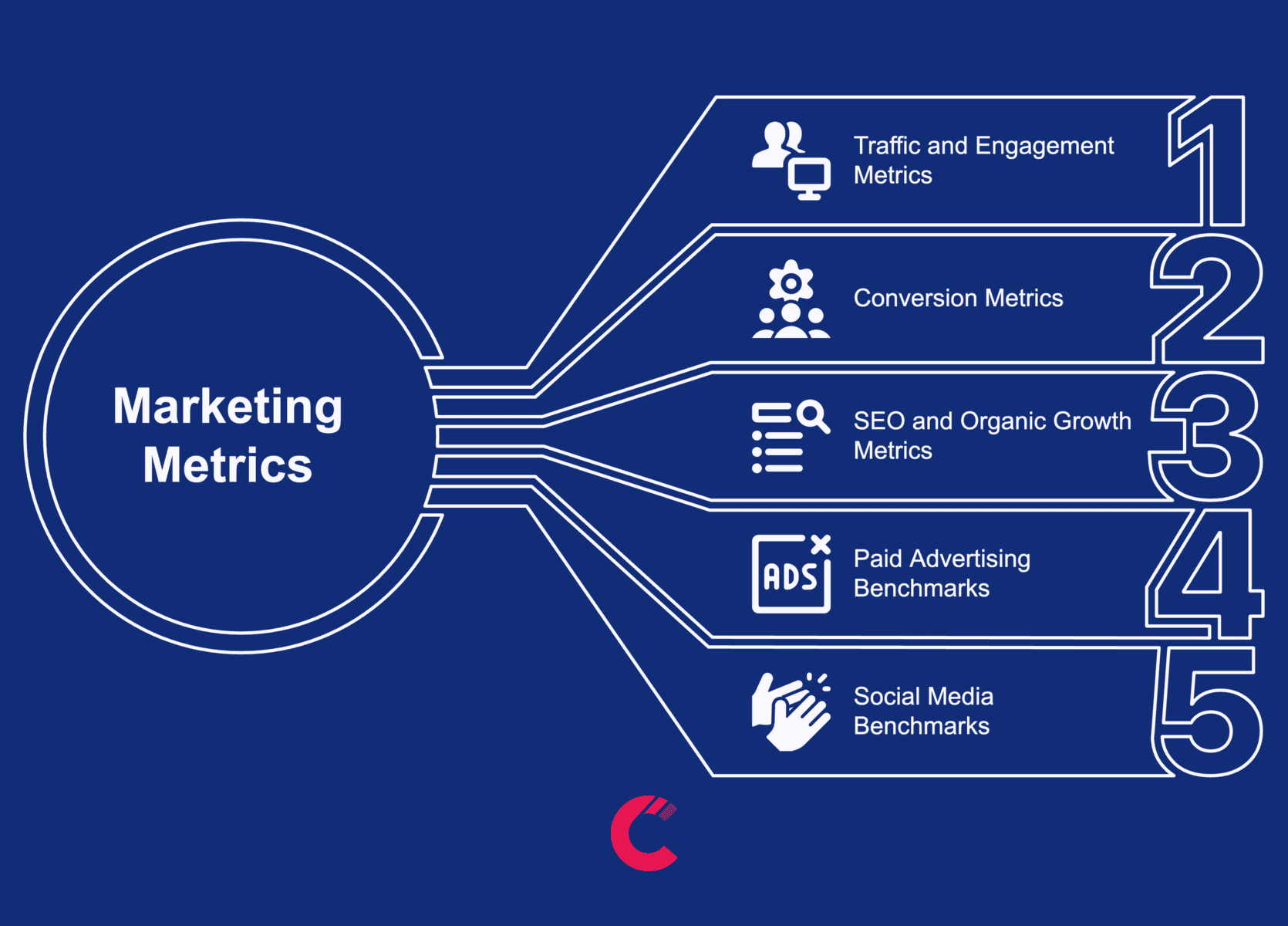
Alright, let’s talk numbers—because benchmarking without tracking the right metrics is like trying to diet without stepping on a scale. (You think it’s working, but is it really?)
There are a ton of marketing metrics out there, but not all of them matter when benchmarking. Some are straight-up vanity numbers (cool, you got more likes, but did that translate to sales?).
Here’s what you actually need to track:
Traffic and Engagement Metrics
This tells you if people are even showing up and what they’re doing when they get there.
- 📈 Website Traffic – How many people visit your site vs. competitors?
- 🔄 Bounce Rate – Are visitors sticking around or ghosting immediately?
- 🕒 Average Time on Page – The longer they stay, the more engaged they are.
- 🎯 Click-Through Rate (CTR) – Are your CTAs and ads actually working?
Why it matters: If your website traffic is half of industry benchmarks, you might need better SEO or ads. If your bounce rate is sky-high, maybe your content (or UX) is turning people off.
Conversion Metrics
Because traffic means nothing if no one’s converting.
- 🛒 Lead Generation Rate – How many visitors turn into leads?
- 🏆 Sales Funnel Performance – Where are people dropping off?
- 💸 Customer Acquisition Cost (CAC) – Are you overpaying to get customers?
- 🔁 Customer Lifetime Value (LTV) – Are customers sticking around or just one-and-done?
Why it matters: If your CAC is higher than your LTV, your business model is broken (yikes). Benchmarking lets you see where to cut costs and optimize.
SEO and Organic Growth Metrics
Because let’s be honest, paying for every visitor forever is a terrible strategy.
- 🔑 Keyword Rankings – Are you ranking for industry terms?
- 🔗 Domain Authority (DA) – How strong is your site compared to competitors?
- 🔍 Organic Traffic Share – Are you winning or losing the search game?
Why it matters: If your organic traffic is way below the industry average, you’re probably too reliant on paid ads (a.k.a. expensive). Time to rethink that content strategy.
Paid Advertising Benchmarks
Ad spend can burn fast—benchmarking helps make sure it’s worth it.
- 💰 Cost Per Click (CPC) – Are you overpaying for clicks?
- 💡 Return on Ad Spend (ROAS) – Are your ads making money or just noise?
- 🎯 Ad Click-Through Rates (CTR) – Are people engaging with your ads?
Why it matters: If your CPC is double the industry average, you might need better ad creatives or targeting. Benchmarking keeps your ad budget from going up in flames.
Social Media Benchmarks
Likes don’t pay the bills—but engagement and reach can.
- 📊 Follower Growth Rate – Are you gaining or stagnating?
- 💬 Engagement Rate – Are people actually interacting with your content?
- 🏆 Share of Voice (SOV) – How much of the industry conversation do you own?
Why it matters: If your engagement rate is below industry benchmarks, your content might be missing the mark. Time to experiment with different formats or messaging.
Digital Marketing Benchmarking: Assessing Your Online Marketing Maturity
So, you’ve got your benchmarks, your metrics, and a growing list of things to improve. But here’s the question: where do you actually stand in the grand scheme of digital marketing? Are you ahead of the curve or still playing catch-up? That’s where digital marketing benchmarking comes in—it helps you figure out your marketing maturity level and what to do next.
Using Capability Maturity Models to Audit Digital Marketing Performance
Not all businesses are on the same digital marketing level. Some are crushing it with automated funnels and AI-driven insights, while others are still figuring out Facebook ads (no shame, we all start somewhere).
A capability maturity model (CMM) helps brands categorize their digital marketing performance into levels. Think of it like grading yourself:
1️⃣ Basic – Posting on social media but with zero strategy (aka “we should probably tweet something today” marketing)
2️⃣ Emerging – Running ads and content marketing, but still reactive
3️⃣ Defined – Clear strategy with consistent tracking and goal-setting
4️⃣ Advanced – Data-driven optimization, automation, and strong attribution models
5️⃣ Best-in-Class – AI-powered, predictive analytics, and market leadership
Why it matters: If you don’t know what level you’re at, you don’t know what to fix next.
The 5-Point Benchmarking Scale and How It Works
This is where you score your digital marketing performance based on different areas like SEO, social media, content, and paid ads. The scale looks like this:
| Level | Description |
|---|---|
| 🚶 Beginner | No clear strategy, no benchmarks, just “doing marketing.” |
| 🚲 Basic | Some tracking, but decisions are mostly gut-based. |
| 🚗 Intermediate | Data is used, but there’s room for optimization. |
| ✈️ Advanced | Strategy is fully data-driven and consistently refined. |
| 🚀 Expert | AI-driven insights, predictive marketing, and automated systems. |
Want to know where you stand? Score yourself in key areas like:
- SEO performance
- Paid ad efficiency
- Email marketing automation
- Website conversion rates
- Social media engagement
Interactive Tools for Digital Marketing Benchmarking
Alright, you don’t have to figure all this out manually (thankfully). There are tools that can benchmark your marketing performance for you:
🔹 Google Analytics – Compare website traffic trends
🔹 SEMrush & Ahrefs – Benchmark SEO and keyword rankings
🔹 Competitors.app – Track real-time competitor marketing activity
🔹 Hootsuite & Sprout Social – Social media benchmarking
Pro tip: Use multiple tools to get a full picture—no single platform tells you everything.
Frequently Asked Questions (FAQ)
What is meant by market benchmarking?
Marketing benchmarking is comparing your performance—traffic, conversions, ad spend, engagement—to industry standards or competitors. It helps you see where you stand and what needs improving. Think of it like a report card for your marketing strategy (except you actually get to change the grades).
What are the 4 steps of benchmarking?
Benchmarking usually follows this process:
1️⃣ Identify what to measure – Choose key metrics (traffic, CPC, conversion rates).
2️⃣ Collect data – Gather insights on your performance and competitors.
3️⃣ Analyze gaps – Compare results to find weak spots.
4️⃣ Implement improvements – Optimize based on what’s working in your industry.
What are examples of benchmarking in marketing?
Here are a few real-world examples:
🔹 SEO Benchmarking – Checking how your keyword rankings compare to competitors.
🔹 Ad Performance Benchmarking – Measuring CPC and ROAS against industry averages.
🔹 Email Marketing Benchmarking – Comparing open and click-through rates to see if your emails actually work.
What is KPI in benchmarking?
A KPI (Key Performance Indicator) is a measurable metric that shows how well you’re doing. In benchmarking, KPIs help you compare performance over time or against competitors. Some key marketing KPIs include:
- Traffic metrics (bounce rate, page views)
- Conversion rates (leads, sales, customer acquisition cost)
- Ad performance (CTR, CPC, ROAS)
Which app can I use to monitor my Facebook Page?
There are plenty of Facebook monitoring apps, but the best one for you depends on what you need. Here are some solid choices:
- Competitors.App – Best for tracking competitors’ Facebook strategies.
- Sprout Social – All-in-one tool for content scheduling, engagement tracking, and analytics.
- Brand24 – Great for social listening and tracking brand mentions.
- Hootsuite – Best for managing multiple accounts and scheduling posts.
- Meta Business Suite – Facebook’s free tool for basic monitoring.
If you just need the basics, Meta Business Suite is fine. But if you want detailed insights or competitor analysis, go for Competitors.App or Sprout Social.
